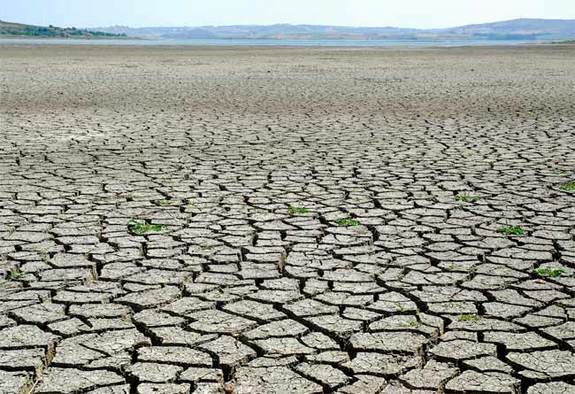
Hockey Stick Scores Another Point in Climate Study: Op-Ed

Anne-Marie Blackburn, an expert on environmental policy, and Dana Nuccitelli, an environmental scientist at a private environmental consulting firm in the Sacramento, Calif., area, are contributors to Skeptical Science. They contributed this article to LiveScience's Expert Voices: Op-Ed & Insights.
The National Hockey League playoffs are right around the corner, and the first round could feature some big rivalry matchups, like a New York/Boston series, and a Canadian battle between Montreal and Toronto. But, an arguably bigger rivalry has just been settled: climate "skeptics" versus "the hockey stick."
In 1999, climate scientists Michael Mann, Raymond Bradley and Malcolm Hughes published one of the first studies reconstructing northern hemisphere temperatures over the past 1,000 years. They found that temperatures had been relatively flat, but slightly cooling over the past millennium up until the 20th century, at which point there was a rapid global warming. Their temperature reconstruction graph had the shape of a stick and blade, and "the hockey stick" was born.
Ever since, the hockey stick model has been one of the main targets of climate skeptics. After all, if the current global warming is unprecedented in the past 1,000 years, that would signal the need to do something to reverse it. The scientists involved have been under constant attack, as Mann documented in his book "The Hockey Stick and the Climate Wars."
However, a string of subsequent studies by a number of scientific groups from around the world have all yielded essentially the same result. Most recently, a paper published in the journal Nature Geoscience this week — co-authored by 78 experts from 60 scientific institutions from around the world — found yet another hockey stick. Their temperature reconstruction shows a slow slide into a future ice age ending abruptly with a sharp rise in temperatures in the 19th and 20th centuries. Recent global surface temperatures are probably the warmest in the past 1,400 years.
The study is the product of an international collaboration by the PAGES (Past Global Changes) scientific network, which supports research aimed at understanding the Earth's past environment in order to make predictions for the future. In 2006, scientists in the PAGES network decided to organize an initiative to reconstruct the climate of the last 2,000 years, which they called The PAGES 2k Network.
Scientists from regions around the world each contributed their expertise on past, local climate change. This expertise is based on a solid understanding of historical records and natural measurements such as tree-ring widths and ice cores. The result is a global surface temperature reconstruction based on 511 records in seven continent-scale regions, representing the best available data for each region.
Sign up for the Live Science daily newsletter now
Get the world’s most fascinating discoveries delivered straight to your inbox.
The authors looked at temperature changes over different timescales. They found a long-term cooling trend over the past 1,000 or 2,000 years up until the past century, when ongoing warming begins. With the exception of Antarctica, the end of the 20th century was either the warmest or nearly warmest in all continental regions.
Current temperatures averaged four-tenths of a degree Celsius warmer than average for the past 500 years. Recent warming has been about twice as fast in the Northern Hemisphere as in the Southern Hemisphere. This is because the southern hemisphere contains more oceans, which warm more slowly than do the land masses. The fastest warming was seen in the Arctic, at nearly twice as fast as the rest of the northern hemisphere. [Oceans Are Feeling the Heat: Op-Ed]
The long-term cooling is probably the result of a combination of factors, including changes in solar and volcanic activity, land cover and in the Earth's orbit around the sun. When the scientists examined shorter time periods, they found that temperature trends often varied between different geographic regions. For example, about 1,000 years ago, temperatures were relatively warm during a time known as the "Medieval Warm Period." However, the warming started sooner, and lasted longer, in the Northern Hemisphere than in some southern regions. Unlike the recent global warming, there was no single time in the past 2,000 years during which warming occurred across the whole planet.
Similarly, the subsequent cool period, known as the "little ice age," began earlier in the Arctic, Europe and Asia when compared with North America and the Southern Hemisphere. These findings are consistent with previous analyses, and explain why these previous periods of temperature change are not as prominent as features in global temperature reconstructions as the recent warming is.
These new results will undoubtedly generate much discussion within the scientific community. The recent PAGES study is one of the first to include regional records from across the globe to provide a better picture of how climate change varies between regions, which is perhaps more relevant to societies and the environment. The result is a platform from which to conduct further studies and improve model projections of future climate change.[Warmer Spring Brings Troubling Consequences: Op-Ed]
Most significantly, the study shows that the global warming over the past century has already erased the long-term cooling from the preceding 2,000 years. The hockey stick is a reality, and the blade will only get sharper with more warming yet to come from continuing human greenhouse gas emissions.
The views expressed are those of the author and do not necessarily reflect the views of the publisher.









